OLD ORCHARD BEACH — Maine Forest Service rangers spent Friday walking the railroad tracks from Biddeford to Scarborough, searching for evidence that a train sparked a 3-mile swath of fires that ignited hundreds of discarded railroad ties, threatened dozens of homes and destroyed part of a campground.
“I believe they found some evidence. I’ll leave it at that,” said Ranger John Leavitt late Friday. “They’ve got more work to do to see if what they found and the burn pattern and all that links up. … They’re going to come back and drill down deeper and look for additional evidence.”
Witnesses reported seeing sparks shooting from a freight train that passed through the area just after 1 p.m. Thursday, fire officials said. Many others said that as the train passed, flames immediately leapt from along the tracks. Two men in Saco said they heard an awful steel-on-steel screeching as the freight train approached, and saw a swirl of burning leaves and debris tossed into the air as it passed.
The brush fires covered more than three miles from Scarborough to Biddeford, destroying at least 10 seasonal trailers in Old Orchard Beach and forcing the evacuation of scores of homes. Five alarms were called, drawing 75 firefighters from 20 communities, some as far away as York.
Pan Am Railways Executive Vice President Cynthia Scarano said the railroad has found no evidence that one of its freight trains sparked the fires. The engines’ exhaust was clean and the brakes showed no malfunction, she said.
The Forest Service, which is leading the investigation, is focusing on the freight train, an official said. Rangers did not plan to inspect the Amtrak Downeaster, which passed through the area a few minutes before the freight train on Thursday afternoon.
The passenger train, which must meet much stricter maintenance and safety standards than freight trains, had no evidence of a malfunction, said a spokeswoman for the New England Passenger Rail Authority, which manages the service.
The Federal Railroad Administration has also joined the inquiry. It said in an email Friday that it is working to determine whether either train was involved in sparking the fires.
RESIDENTS ANGRY
Residents who live along the tracks in the area say they are angry at the railroad for leaving old and broken railroad ties, soaked in creosote preservative, along the track bed. Those ties helped feed many of the fires. Some were still smoldering Friday, despite a light rain.
“They just cut them in half and replace them and throw them out here. These have been here forever,” said Frank Sholes of Wood Avenue in Saco, gesturing to dozens of burnt timbers along the tracks near his house. “If I kept that on my property, I’d get a ticket for blight.”
Jim Petrin, who also lives on Wood Avenue, said he summoned the fire department last summer for a blaze across the street that sprang up just as a freight train passed.
A fire about a year ago destroyed a neighbor’s fence, Sholes said.
“That stuff should have been cleared out already,” Petrin said.
Sholes said he should be compensated for his burned backyard fence, and for many small burn holes in his pool cover and the fabric hangar in which he stores his wife’s car.
He was with his neighbor Neil O’Connor, working in a garden, when they heard the train approaching about 1:30 p.m. Thursday.
“There was a God-awful squealing sound – metal on metal,” said Sholes, who said he hears trains several times a day and sleeps through them at night. “You could smell the smoke out here and then it was raining fire. … Wherever you looked, there were burning leaves in the air. I thought they opened the gates of hell. That’s what it looked like.”
The fire started burning his wooden stockade fence, Sholes said. He and O’Connor used a garden hose to keep the flames down until Sholes collapsed from the exertion and smoke and had to be rushed to the hospital in an ambulance.
“Today, I’m hacking and puking,” he said, but he, like other residents along the fire’s path, is lucky it wasn’t worse. “It’s amazing nobody died,” he said.
STATE SPECIFICATIONS
State law requires railroads to maintain corridors that are clear of flammable material. Generally, the cleared area must be 7 feet from the outside of the rails. In a “fire-start” area, where one or more fires have been caused by railroads within five years, the corridor must be clear to 25 feet outside the rails.
A separate clause in the law suggests the wider buffer could be applicable even in areas without previous fires.
“Where a right-of-way passes through an area of high-value property and the right-of-way contains sufficient flammable material so that a fire starting on the right-of-way could travel to and threaten the high-value property, the minimum 7-foot standard is extended to 25 feet,” the statute says.
In December, the Forest Service inspected the corridor where Thursday’s fire broke out and found that it met the 7-foot clearance rule, said Leavitt. The area had not been designated a high-risk area, he said.
Scarano said Pan Am Railways typically gathers up old ties in the spring, before construction season, and again in the fall.
Sometimes, ties are removed as part of an upgrade, such as those done for the New England Passenger Rail Authority, she said.
Randy McMullin, who manages solid waste facilities in southern Maine for the state Department of Environmental Protection, said there are no state laws dictating when railroads must remove discarded railroad ties, which are classified as construction debris and fall under the DEP’s purview.
When homeowners complain about discarded ties near rails, he asks railroads to remove them, and they typically comply, he said.
He said railroad ties are sealed with creosote to protect them from rot, and some ties contain a pesticide, pentachlorophenol, that produces a small amount of dioxin when burned.
McMullin, who lives in Old Orchard Beach and often walks his dog near the tracks, said he had not noticed an unusually large number of discarded ties along the rail bed. However, he said he has noticed a lot of brush and dead branches in the adjacent wooded areas.
“It’s really dry right now, and there is dead wood sitting around,” he said.
DAMAGE ASSESSMENT
Old Orchard Beach Fire Chief John Glass said Friday that his crews were doing a damage assessment so that when residents whose property was destroyed or damaged file claims, the insurance companies can get fire reports. No total cost estimate of the damage had been established Friday afternoon.
Insurance adjusters were inspecting property Friday at the Wagon Wheel RV Resort and Campground, where 10 trailers and some propane tanks were destroyed, and at the Olde Salt Village condominiums, where sections of fence and storage areas were burned.
Scarano said railroads in Maine are responsible for compensating fire departments that respond to fires caused by trains. She said Pan Am Railways has a department to handle claims from property owners who seek damages.
Scarano said the Pan Am Railways freight train was stopped and inspected in Dover, New Hampshire on Thursday night.
The train, designated DO1, is a local delivery train that carries goods from Rigby Yard in South Portland to Dover, Scarano said. It had about 50 cars and was loaded with frozen fish, steel, plywood and other wood products.
The freight train was preceded by a few minutes by a southbound Downeaster train. Pan Am Railways owns the tracks and the New England Passenger Rail Authority is a tenant, Scarano said.
Leavitt said there were no further plans to inspect the Downeaster, with the inquiry focused on the freight train.
David Hench can be contacted at 791-6327 or at:
Twitter: @Mainehenchman
Tom Bell can be contacted at 791-6369 or at:
tbell@pressherald.com
Copy the Story LinkSend questions/comments to the editors.

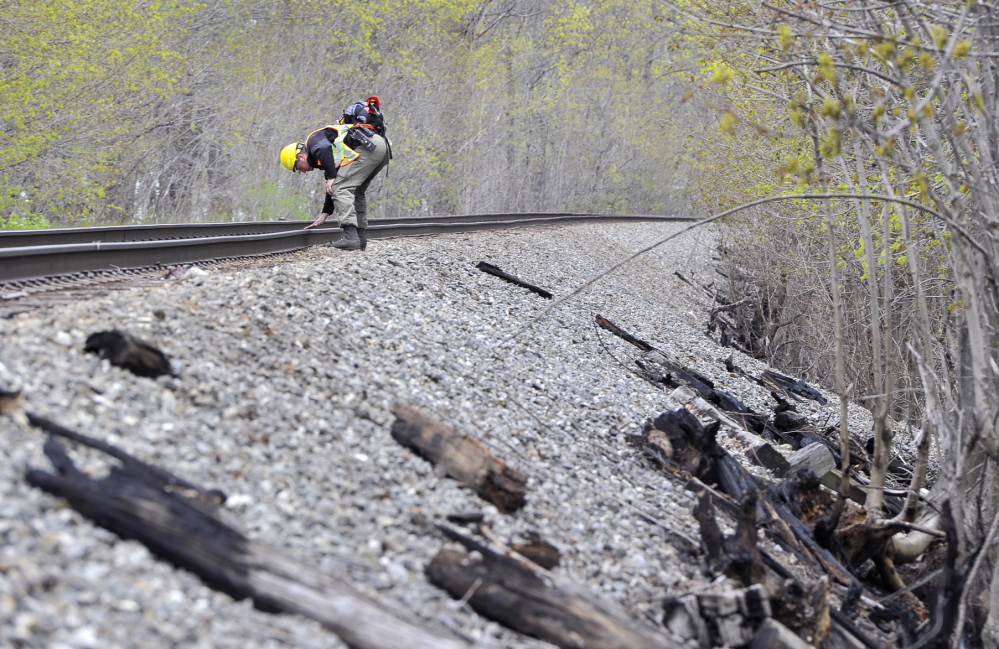
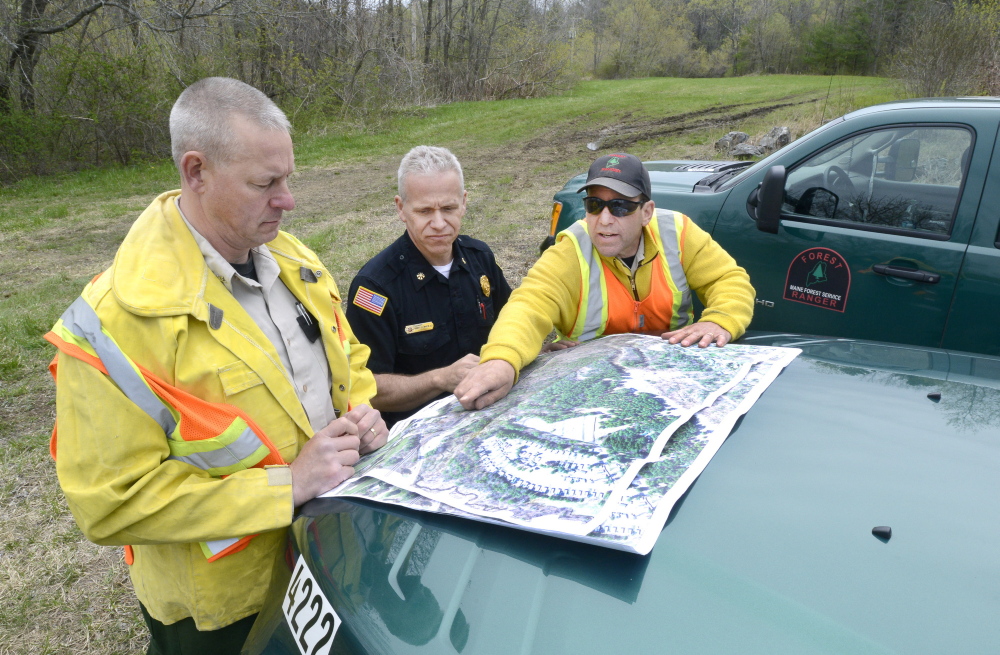
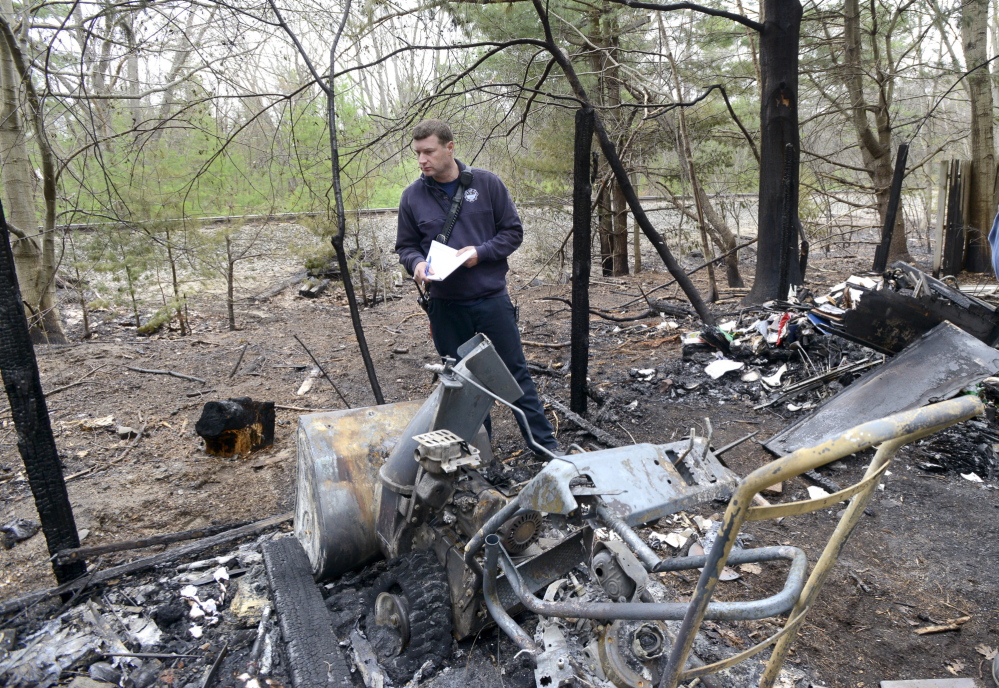
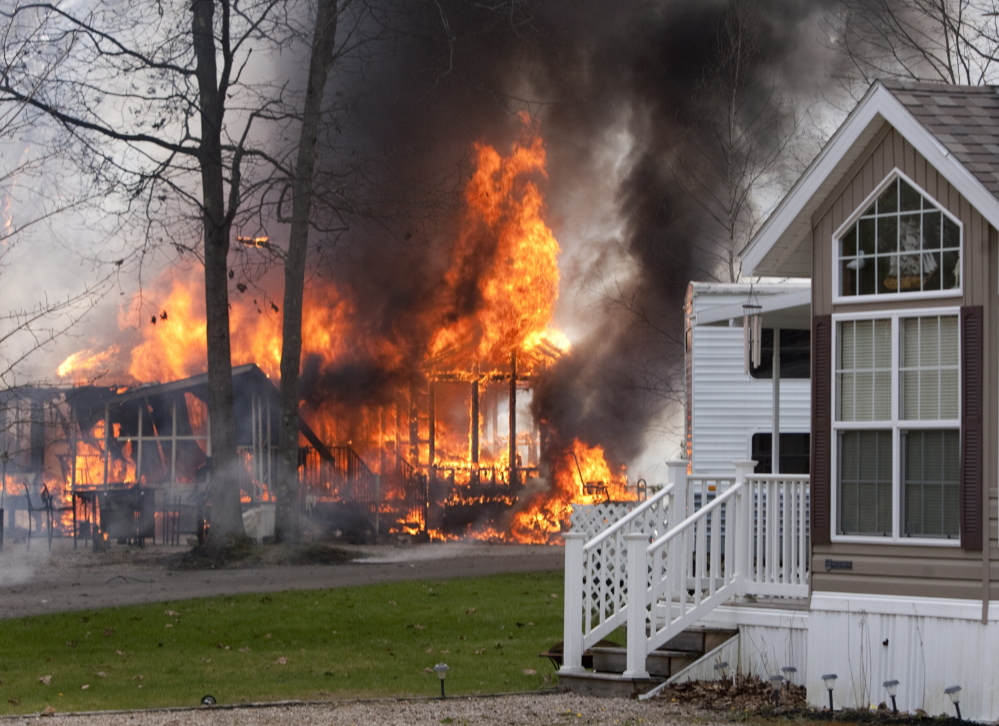
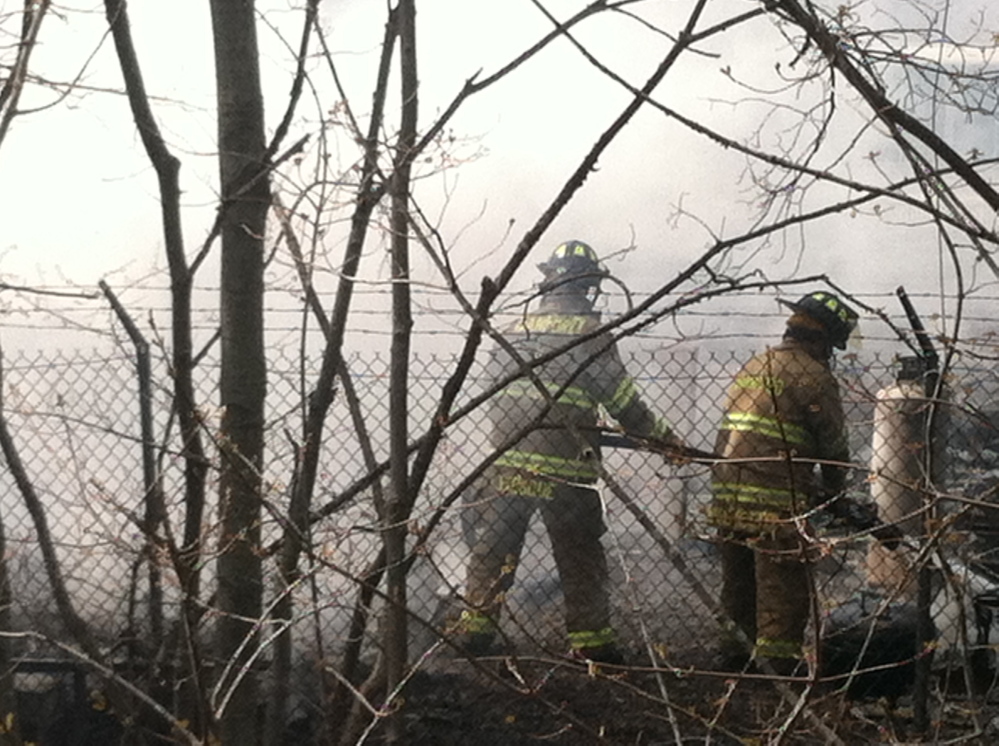

Success. Please wait for the page to reload. If the page does not reload within 5 seconds, please refresh the page.
Enter your email and password to access comments.
Hi, to comment on stories you must . This profile is in addition to your subscription and website login.
Already have a commenting profile? .
Invalid username/password.
Please check your email to confirm and complete your registration.
Only subscribers are eligible to post comments. Please subscribe or login first for digital access. Here’s why.
Use the form below to reset your password. When you've submitted your account email, we will send an email with a reset code.